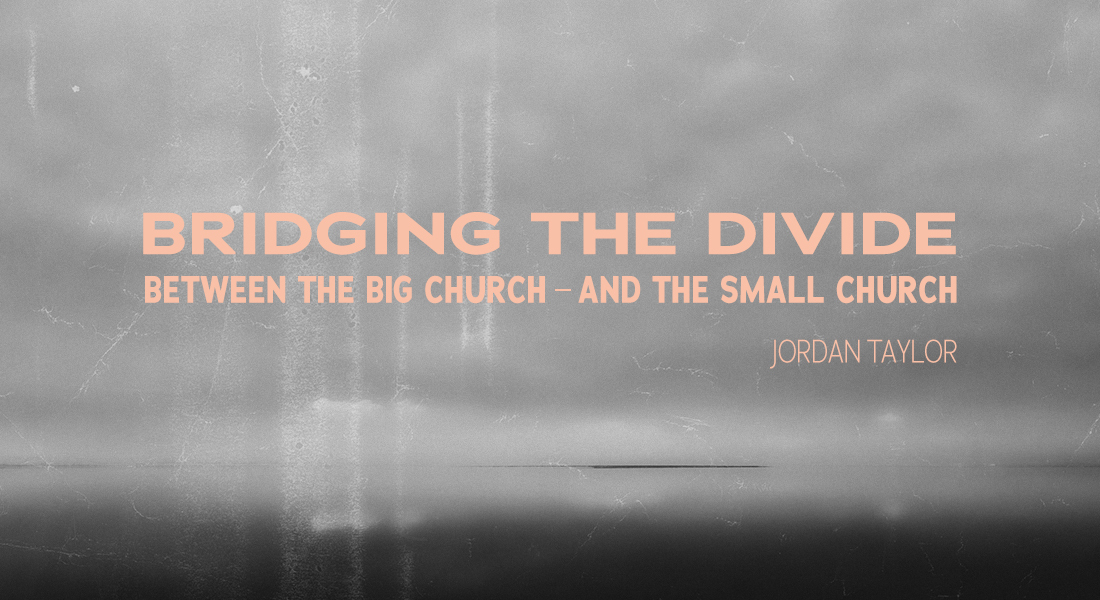
There is an unspoken divide within the church today, and that is between the big church and the small church. This divide is unspoken because it is often so personal for pastors. (As a small church pastor, I know!) Church size is often how pastors let other pastors know how they are doing – they are doing well because their church is growing bigger, or their church is struggling, which pastors don’t necessarily want to divulge because their church is still small.
But what if we are looking at this issue from the wrong angle?
The approach Karl Vaters takes in his book Small Church Essentials is that the small church can be an effective church; the small church “is not a problem, virtue, or an excuse.”1 Karl’s approach is compelling. For one thing, he doesn’t lazily use the shortcut of demonizing the big church to get to his goal, rather he says,
1. “[Small churches] have to believe they can be great.
2. They need to see what a great small church looks like.
3. They need resources designed for great small churches.”2
Pastor Vaters is no stranger to church growth. He tells a story of his church growing over 10 years from 75 to 400 congregants, but then suddenly shrinking over a number of months to less than 75! There was no scandal. There was no split. Long story short, it was simply a small church, and that is good, or rather, it can be good. The stats3 say that 90% of churches in America, across regions and denominations, are small churches, which are churches less than 200 people. These small churches are not a problem; they are the bread and butter of American Christianity. To be clear, big churches are not a problem either. Small and big churches need each other, “but no church can be a great church if they don’t know they can be a great church. Too many small churches and their pastors are laboring under a false impression—a lie, really—that their church can’t be great until it becomes bigger.”4
To help small churches become great, Karl reframes the issue and asks, “What does a healthy small church look like?”
Small Church Essentials is broken up into four parts: First, it tackles the important truth that “Small ≠ Broken.” Due to numerous reasons, bigger is better has become the prevailing mantra of pastoral expectations. Here the book carefully rephrases expectations so that small church pastors neither think being small is a virtue, nor an excuse, but an opportunity to make something great. Second, the book deals with “Thinking Like a Great Small Church.” Here the book carefully crafts a better definition of church growth, because every small church needs a metric of measurement. In part three, it’s about “Bringing New Life to an Existing Small Church.” Here the book blossoms as it tackles important issues like vision casting and starting/stopping ministries, issues not often contextualized for churches smaller than 200. Finally, the book looks at “Becoming a Great Small Church.” It’s always important to have practical takeaways, and here the book gives some good ones, on topics like hospitality and small groups.
Recently, I attended a seminar led by Pastor Vaters hosted by Calvary Arlington, which is located in northern Washington State, just outside the beautiful Mt. Baker National Forest. I brought a friend with me, who’s a recent church-planter (by the way, every church plant starts as a small church!) and from the seminar’s beginning, my friend kept reiterating that more people need to interact with this vision for small churches. After reading Small Church Essentials, I wholeheartedly agree. It’s not that I agree with everything the book says, for instance, Mr. Vaters’ view of small groups is limited to one philosophy for small groups – for fellowship. There are other philosophical reasons to have small groups, but I agree with Mr. Vaters, small groups must be contextualized for small churches.
Small Church Essentials is an invaluable resource for the small church pastor and an important addition to the broader conversation in the American church.
The divide between the big church and the small church is a false dichotomy and is often indicative of a deeper illness within the American church, but by reframing conversation the way Karl Vaters does, perhaps any-size-church will be inspired and endeavor to be great.
Karl Vaters’ book, Small Church Essentials, can be purchased from Moody Publishers. Also, check out the Small Church Seminar at Calvary Arlington.
Notes:
1 Karl Vaters, Small Church Essentials: Field-tested Principles for Leading a Healthy Congregation of Under 250, Moody Publishers. 2018.
2 Ibid.
3 Fast Facts about American Religion. Accessed 2019.
4 Ibid.









